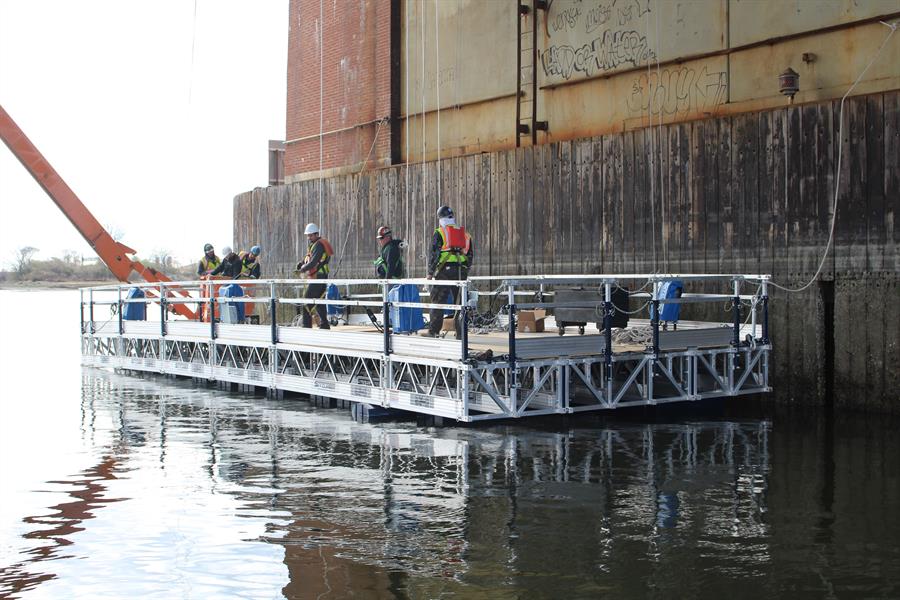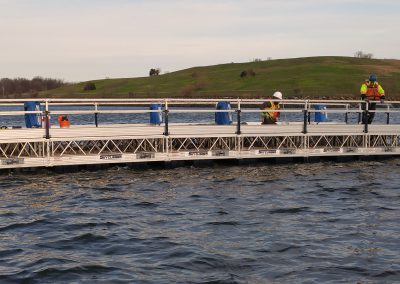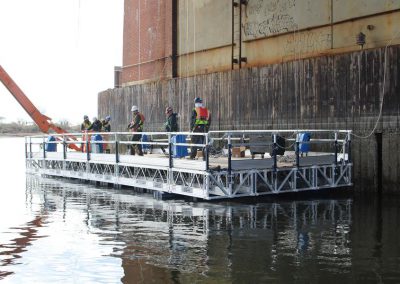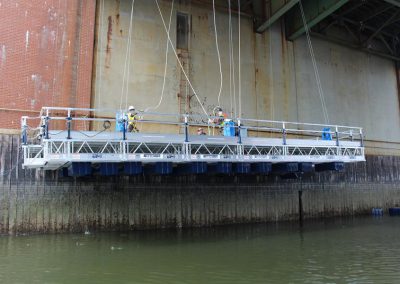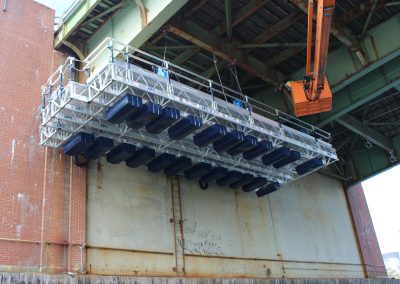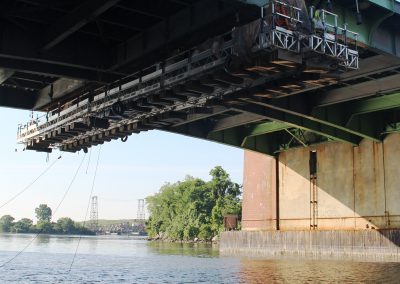This version has been condensed for blog compatibility. A full article is available on PaintSquare.com.
Bringing innovation to a historic bridge in the Bronx
As one of four movable bridges in the Bronx, the Hutchinson River Parkway Bridge is a critical link to major interchanges in New York City. After opening in 1939 to carry travelers over the Harlem River, this drawbridge or bascule-type structure was widened from four lanes to six in the late 1940’s and has seen a number of changes in the decades since.
When L&L painting of Hicksville, New York won the contract to sandblast and paint the underside of the bridge, the company encountered a major challenge: How to service a movable bridge while allowing traffic flow both over the bridge and under it? The Coast Guard required that the drawbridge retain its ability to be raised and lowered every other week throughout the life of the maintenance project, and work platforms could not be attached to the lift sections of the bridge during those times. Continually installing, uninstalling, and reinstalling traditional service platforms would simply not work for this project.
L&L Painting reached out to Sky Climber LLC for a solution and received a custom deck that would solve the access issue for what L&L Painting described as “a project that was going to be demanding in schedule and logistics.”
The final solution included two platforms based on the Sky Stage Ultra (SSU) Decks, which spanned the total width of the bridge when suspended end to end. The platforms had three very critical features: they were quickly assembled, were easy to install, and could float.
The process of installing the decks could be completed in a single day. The lightweight platforms were assembled at a nearby marina and towed into place by a small watercraft, thanks to a clever pontoon system under each platform. By adding a self-floating capability, we eliminated the need for L&L Painting to employ a barge each time the platforms needed to be installed or uninstalled.
With beam clamps, suspension cables and safety lines secured to floor joists under the bridge, the floating decks could be attached quickly and raised into position. Once in place additional support cables and containment tarps could be installed.
Work crews found that using this work platform was as easy as installing it. Each 16-foot-wide by 45-foot-long deck featured several key Sky Climber components, including Central Control Boxes (CCBs) that controlled LNX Electric Hoists paired with snatch blocks to double their capacity. The CCB devices make it possible to maintain a flat work surface as it allows one person to operate multiple hoists at the same time. Hoists can be individually operated or several can be operated in unison.
“We have installed, broken down and re-installed the platform systems multiple times since they were brought on-site… Our familiarity with the system, and the simple and effective design, has made it a pleasure to use on this project.”
The ultimate loading requirements for the deck were met by installing additional pick points around the platforms’ perimeters – thus leaving the interior of the work area free of obstructions for the work crew. Plus, the platforms could be easily tarped to contain blast debris for this full-containment project. During operation, a cantilevered design also allowed crews to easily reach the top of the bridge from the platform with a ladder.
At the end of each seven-day maintenance phase, each platform was lowered to the water, floated out of the way, and stored until its re-installation seven days later. This process repeated for the duration of the project until the underside of the lift sections had been completely cleaned and painted. Mid project, L&L Painting’s Declan Farrington provided feedback on the Sky Climber equipment: “We have installed, broken down and re-installed the platform systems multiple times since they were brought on-site… Our familiarity with the system, and the simple and effective design, has made it a pleasure to use on this project.”
As our bridges continue to age, maintenance teams will be forced to find new ways to access some of the most challenging structures in our landscape. Venturing beyond traditional access solutions will be key for crews to safely reach bridge workspaces regardless of size, design, or purpose. For the Hutchinson River Parkway Bridge, a project at height began with a trip over the water, and that’s just what was needed to get this job done right.
